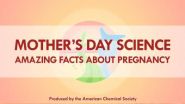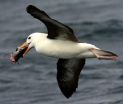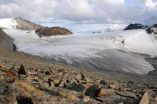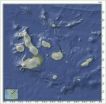(Press-News.org) Britain could become a nation of non-swimmers if drastic changes aren't made to ensure all young people have access to adequate lessons and facilities, according to academics at the University of East Anglia (UEA).
Dr Craig Avieson and Dr Penny Lamb, of UEA's School of Education and Lifelong Learning, warn swimming provisions are falling to secondary physical education (PE) teachers, with 51 per cent of British children aged 7-11 unable to swim 25 metres. Children should be able to swim at least that length by the time they leave primary school, under curriculum requirements for Key Stage 2.
"It is a national problem that children cannot swim by age 11," said Dr Avieson, who along with Dr Lamb is publishing an article in the journal Physical Education Matters, outlining findings and presenting a new training model for teachers.
"Ensuring children have basic swimming skills is the responsibility of both primary and secondary schools and this is a chance to do something about it," said Dr Avieson.
"Teaching children such an important life skill should be a priority and there should be joined-up thinking between primary and secondary schools to address this issue."
Lack of funding, cost of transport and limited access to a pool - particularly in rural areas - are some of the reasons for a decline in swimming provisions for primary school students. With additional support and training for teachers, Dr Avieson and Dr Lamb believe there is hope of improving upon the findings of a 2013 Ofsted report, which showed one-fifth of 120 primary schools did not meet the required swimming standard for Key Stage 2.
In their article, Dr Avieson and Dr Lamb present a new model that uses the Amateur Swimming Association's (ASA) National Curriculum Training Programme to prepare trainee teachers to give swimming instruction.
Developed through a pilot study with UEA's secondary PGCE Physical Education programme, the model gave trainee teachers confidence in teaching swimming and increased awareness of ways to support lower-ability children.
In February the government announced additional funding of £150 million a year until 2020 to improve provision of PE and sport in primary schools. Dr Avieson, a lecturer and former assistant head teacher, said national curriculum changes for 2014 and the increased government funding are incentives for improving swimming provisions for young students.
The article's findings are supported by the ASA, which conducted the largest-ever school swimming census involving more than 3,500 primary schools, in 2013. It found that on average, just 0.25 per cent of curriculum time was allocated to swimming, compared to 5 per cent allocated to other aspects of PE. Almost 20 per cent of schools – and 25 per cent of academies – do not know their swimming attainment rates or do not offer swimming at all,
"With 51 per cent of primary school children unable to swim the minimum of 25 metres, it has become essential for secondary PE teachers to understand the fundamental, core aquatic skills of swimming and how these skills transfer to the development of swimming strokes and other aquatic activities," said Susan Barlow, manager of the ASA's School Swimming programme.
"The NCTP allows secondary PE teachers to gain this knowledge and understand where these key skills fit.
The number one resource is school teachers: with the correct training they can give pupils the best possible start to swimming."
Barlow said the ASA recently created a website aimed at teachers to provide the essential guidance and support needed to meet the Key Stage 2 National Curriculum requirements. It can be found at: http://www.swimming.org/schoolswimming.
INFORMATION:
'Preparing trainee teachers for teaching swimming: an innovative model of delivery', Dr Craig Avieson and Dr Penny Lamb, is published in Physical Education Matters, May 6, 2014.
More support needed for teaching swimming in schools
2014-05-06
ELSE PRESS RELEASES FROM THIS DATE:
Are we ready for contact with extraterrestrial intelligence?
2014-05-06
The SETI project scientists are known for tracking possible extraterrestrial signals, but now they are also considering sending messages from Earth telling of our position. A researcher from the University of Cádiz (Spain) questions this idea in view of the results from a survey taken by students, revealing the general level of ignorance about the cosmos and the influence of religion when tackling these matters.
The Search for ExtraTerrestrial Intelligence (SETI) project is an initiative that began in the 70s with funding from NASA, but that has evolved towards the collaboration ...
Mother's Day science: Reactions highlights amazing facts about pregnancy -- video
2014-05-06
WASHINGTON, May 6, 2014 — Pregnant women go through a lot to bring a baby into this world: 2 a.m. food cravings, hypersensitivity to certain smells and morning sickness, not to mention labor and delivery. In honor of Mother's Day, the American Chemical Society's (ACS') newest Reactions video highlights the chemistry behind a pregnant woman's altered sense of taste and smell, how mom's diet influences baby's favorite foods and other pregnancy phenomena. The video is available at http://youtu.be/Gnqjh-L4e9g
And because moms always deserve more, we've created a bonus video ...
State of the nation's egotism: On the rise for a century
2014-05-06
ANN ARBOR—Forget the "me" generation. A new analysis of long-term trends in egotism shows there's been a "me" century in America.
The analysis, conducted by researchers at the University of Michigan, shows that characteristics related to self-interest, compared to interest in the lives and needs of other people, was low during the 19th century but rose steadily after the turn of the 20th century.
"We found that self-interest tends to peak after economic booms," said William Chopik, a doctoral candidate in psychology at U-M and first author of the paper just published ...
Snacking contributes to fatty liver and abdominal obesity
2014-05-06
Researchers from The Netherlands found that snacking on high-fat and high-sugar foods was independently associated with abdominal fat and fatty liver (hepatic steatosis). According to the study published in Hepatology, a journal of the American Association for the Study of Liver Diseases, hypercaloric diet with frequent meals increases intrahepatic triglyceride content (IHTG) and fat around the waist, but increasing meal size did not.
Obesity is a global health concern with the World Health Organization reporting that more than 200 million men and close to 300 million ...
Scientists challenge FIFA: Save the 3-banded armadillo
2014-05-06
New research in Biotropica asks FIFA to follow through with its environmental claims. The 2014 FIFA (Fédération Internationale de Football Association) World Cup will be played in Brazil. Its "Football for the Planet" program aims to monitor greenhouse gasses, provide environmentally friendly stadiums, and better waste management. However, FIFA has not maximized this opportunity. In an article published in the upcoming issue, researchers challenge the role that FIFA and the Brazilian government play in protecting the environment, asking both to: protect 1,000 hectares ...
Mobile health apps lack behavior-change techniques
2014-05-06
Behavior-change techniques are not well represented in the marketing materials for top-rated physical-activity apps, according to a team of Penn State researchers.
They also found that two types of physical-activity apps are available on the market -- those that focus on educating users on how to perform different exercises and those that focus on supporting users' motivation for physical activity.
"The app marketplace is largely unregulated and users make decisions based on developers' descriptions of apps," said David Conroy, professor of kinesiology. "Our results ...
$200 bird scaring line for trawlers can cut albatross deaths by over 90 percent
2014-05-06
The sight of seabirds following trawlers in order to feast from discarded fish is a common maritime sight, but each year many thousands of seabirds are killed by overhanging cables or in nets. New research in Animal Conservation assesses mortality figures from South Africa to show that a simple bird scaring line can reduce the mortality rate by over 90%.
The research compiled data from five years of observations to compare current and historic mortality rates. Previous research shows that in 2006 approximately 18,000 seabirds were killed each year by the South African ...
The first globally complete glacier inventory has been created
2014-05-06
Thanks to the efforts of an international group of scientists – one of them is Tobias Bolch from Technische Universität Dresden, Germany - who have mapped all of the world's glaciers, glaciologists can now study with unprecedented accuracy the impacts of a changing climate on glaciers worldwide, and determine their total extent and volume on a glacier-by-glacier basis. Overall, glaciers cover an area of about 730,000 km2 and have a volume of about 170,000 km3. The scientists found nearly 200,000 of them, but they say that this is the least important result of the mapping ...
How have changing sea-levels influenced evolution on the Galapagos Islands?
2014-05-06
VIDEO:
This movie is a simple 0 m to -210 m geographical loop sequence at 5 m increments. Important features are the substantial gaps between Galapagos' "core " islands even at -100...
Click here for more information.
The Galapagos Islands have an iconic status in the history of evolutionary study, now new research shows that the islands' own geological past may have influenced the evolution of the chain's native species.
Writing in the Journal of Biogeography, ...
Adults at higher risk of suicide attempt if parent abused alcohol, research finds
2014-05-06
WASHINGTON -- People who grew up with a parent who abused alcohol may be 85 percent more likely to attempt suicide than people whose parents did not abuse alcohol, according to research published by the American Psychological Association.
Furthermore, having divorced parents increased by 14 percent the risk that a person would try to take his or her own life when compared to people whose parents did not divorce, the study found. But putting those two factors together - parents who abuse alcohol and are divorced -- did not increase suicide attempts, according to the study, ...




